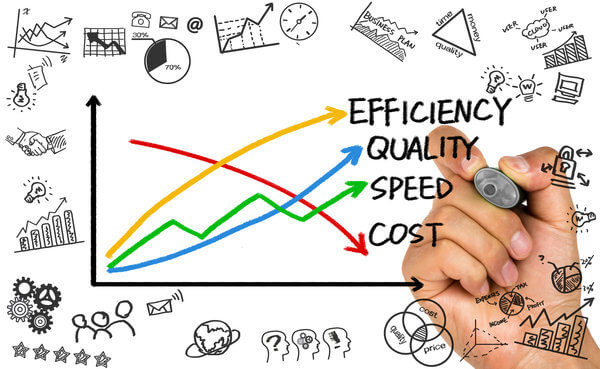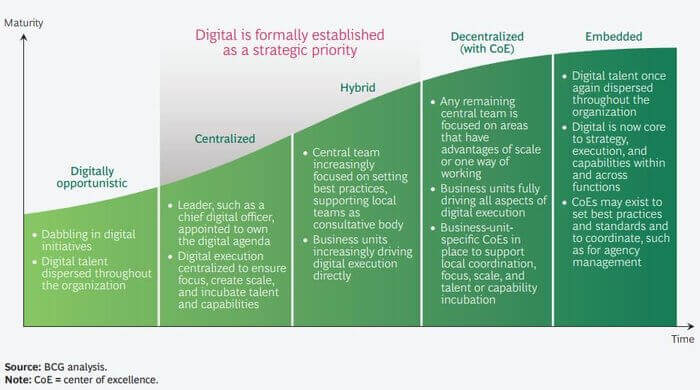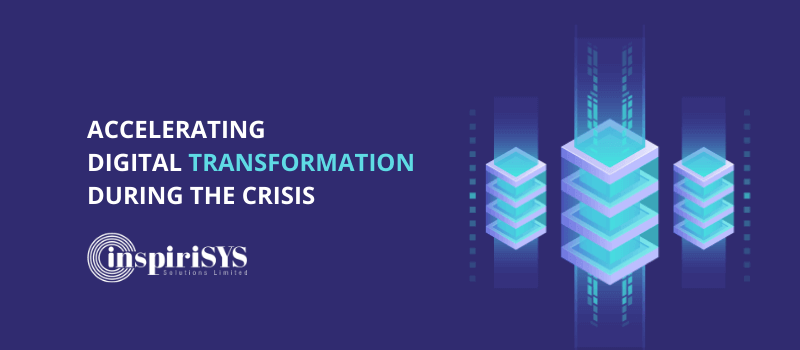The COVID-19 crisis apparently provides a sudden glimpse into a future world. While governments around the world mounted lockdowns, the demand for digital services and products has hit record levels. Businesses that once mapped digital transformation in 1 to 3-year phases should now speed-up their strategies in a matter of days or weeks. It is evident that many Asian banks swiftly migrated physical channels online. Likewise, healthcare providers have transitioned to telehealth and retailers into contactless shopping and delivery. Digital has become central to every interaction. The crisis ignited digital channels to become the primary customer-engagement model. Let’s dive deep into how digital transformation evolves in a time of crisis.
Next-Gen Offerings
 By now, many businesses likely strategized their digital transformation journey and addressing the challenges brought by the crisis. The strategy also helps to analyze the changing customer behaviour and how competitors and markets are moving to meet them. Plotting this rapid change assists to address immediate risks to the business. But it also invites to foresee bigger issues and opportunities. The crisis forces businesses to find new ways of serving customers and working with suppliers across traditional industry boundaries. For previous physical offerings, many organizations are looking for virtual replacements or at least new ways of making them accessible with minimal physical contact. This type of next-gen offerings can often involve new partnerships or the need to access new platforms.
By now, many businesses likely strategized their digital transformation journey and addressing the challenges brought by the crisis. The strategy also helps to analyze the changing customer behaviour and how competitors and markets are moving to meet them. Plotting this rapid change assists to address immediate risks to the business. But it also invites to foresee bigger issues and opportunities. The crisis forces businesses to find new ways of serving customers and working with suppliers across traditional industry boundaries. For previous physical offerings, many organizations are looking for virtual replacements or at least new ways of making them accessible with minimal physical contact. This type of next-gen offerings can often involve new partnerships or the need to access new platforms.
Business Model Transformation
 Change is inevitable. During the crisis, the change involves going beyond comfort zones and it requires taking a holistic view of operating models. While many businesses are subjected to function with limited resources, the experience of leading companies suggests that focusing on areas that touch the core of the business will give the best chance of success. In particular, bringing minor changes in the non-core functions leads to returns on investment below the cost of capital. It is evident that organizations rapidly adopting Artificial Intelligence tools and Machine Learning algorithms to redefine their business model have been outperforming their peers. For instance, a remote working strategy brings flexibility and diversity. These core changes in functions are crucial strategies to maintain productivity.
Change is inevitable. During the crisis, the change involves going beyond comfort zones and it requires taking a holistic view of operating models. While many businesses are subjected to function with limited resources, the experience of leading companies suggests that focusing on areas that touch the core of the business will give the best chance of success. In particular, bringing minor changes in the non-core functions leads to returns on investment below the cost of capital. It is evident that organizations rapidly adopting Artificial Intelligence tools and Machine Learning algorithms to redefine their business model have been outperforming their peers. For instance, a remote working strategy brings flexibility and diversity. These core changes in functions are crucial strategies to maintain productivity.
Fusing Business & Technology

The rapid shift to virtual operations both inside and outside the organization offers an opportunity to accelerate the adoption of technologies. It also reveals potential trouble spots with the organization’s current technology stack. The top priority should be on data security. As remote working is the new normal and the transition to a flexible workforce is rapid, keeping an eye on data security when accessing data from a remote location is mandatory. When 100 percent of the interactions with customers, employees, and business partners go virtual, the possibilities and sources of breaks as well as crashes should be identified, measured, and addressed. Cloud computing has emerged as an ally for enterprises as remote work and collaboration started to redefine the business models. Fusing business and technologies such as cloud, AI and automation can help to aggressively fix the issues with new offerings.
Inspirisys Digital Transformation Solutions
Inspirisys helps enterprises transition seamlessly during the crisis while overcoming risks. With the implementation of appropriate modern technologies such as cloud, enterprise security, and Artificial Intelligence, we bring flexibility to the remote workforce. As digital transformation pace doubles during COVID-19, Inspirisys supports businesses to pivot quickly and remain agile. While the demand for cloud infrastructure surges, we offer secured cloud solutions and accelerates the pace of cloud migration plans.







